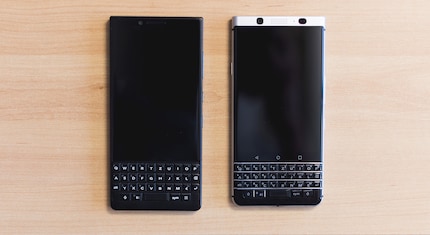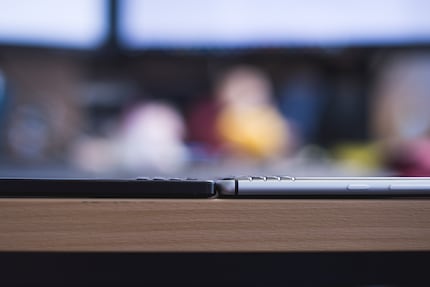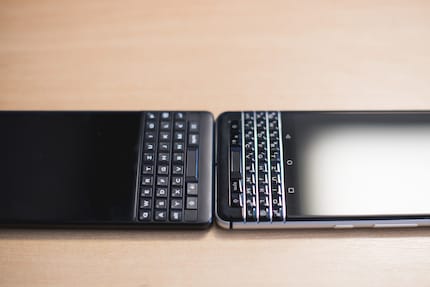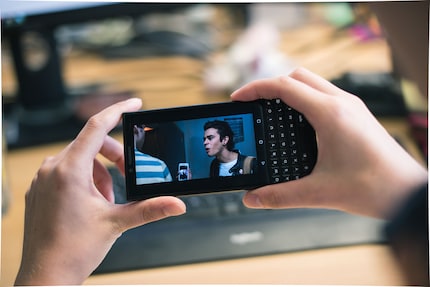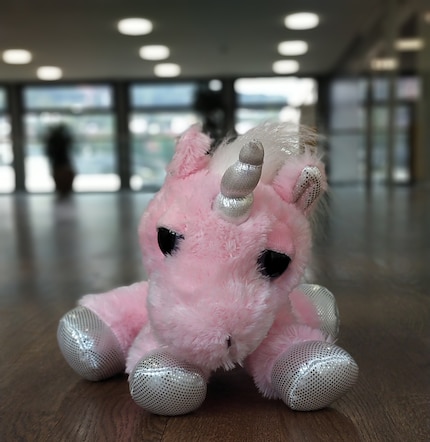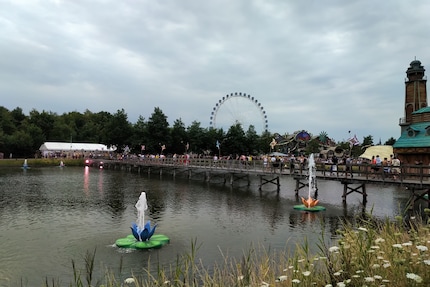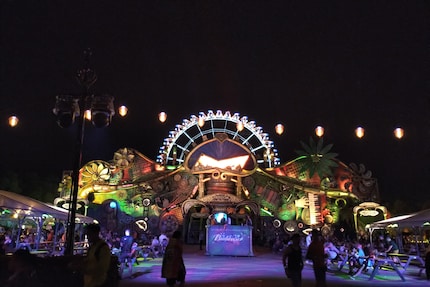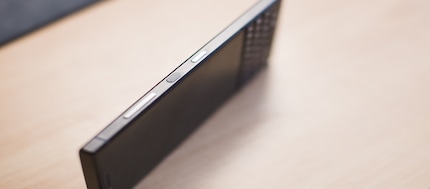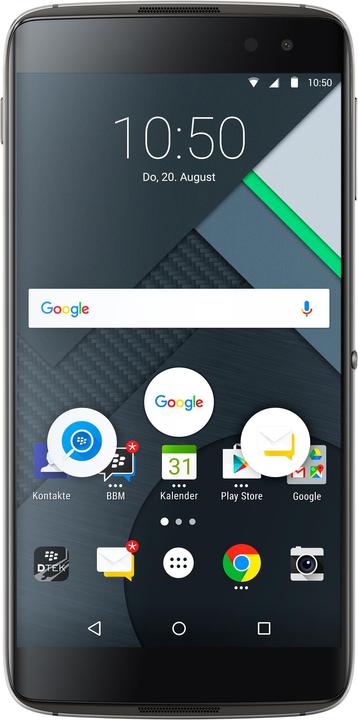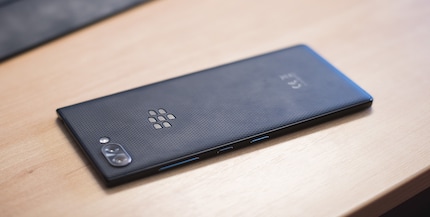
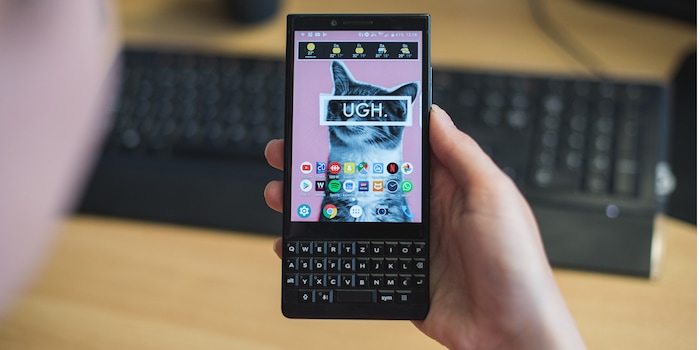
Business as usual? The Blackberry KeyTwo tested
People who like physical keyboards can rejoice: the Blackberry KeyTwo is here. Compared to its predecessor, Blackberry has improved a few things. But what else can the phone do and is it worth buying? I do the test.
There it is: the new Blackberry KeyTwo. The black version is in front of me. Despite its size, I can hold it easily with one hand. The matt black with the white keys looks smart. Although it is a black square, like most phones, the Blackberry stands out from the crowd of smartphones with its keyboard. In contrast to its predecessor, the KeyTwo is flatter and lighter, but also more angular.
The Blackberry fan community is delighted. They are getting a successor to the KeyOne. The manufacturer is said to have listened to the opinions of its customers and improved many things. But is that really the case? I tested the KeyTwo for three weeks and have the answers.
All Blackberrys introduced after the Priv were no longer produced by Blackberry itself, but by the company TCL. The Chinese company also produces the phones for Alcatel, among others. However, the software is still from Blackberry. Since the Priv, the whole thing runs on Android.
The KeyTwo on the left, the KeyOne on the rightAlthough Blackberry no longer produces its own mobiles, the Canadian company has remained true to itself. Not just because of the keyboard. The non-slip back made of profiled plastic, on which fingerprints are barely visible, has remained. And the KeyTwo is similar to its predecessor in other respects too.
The most important thing first: the keyboard
The left keyboard is that of the KeyTwoBack then, my second mobile phone was from Nokia and had a QWERTY sliding keyboard. I celebrated that thing. None of my colleagues could type text messages as quickly as I could. At first, I was slower with the KeyTwo than with a touch keyboard. But the more I write, the faster I get. After about ten days, I'm typing faster and, above all, with fewer typos. Typing with one hand also works, but it's slower and gets tiring over time.
It can do even more
As with the KeyOne, the fingerprint sensor is located in the space bar. I think it's a very elegant solution. In contrast to its predecessor, the scanner has become almost half a centimetre larger. It works quickly and reliably.
Blackberry itself calls the keyboard the smartest keyboard ever. That's Marketing gobbledygook - the keyboard is good, no doubt, but SwiftKey is very similar to the Blackberry system, for example. The predictions are also very accurate. The only thing you can't do with SwiftKey is scroll.
There you have your small display
As with the previous model, the display measures just 4.5 inches and is in 3:2 format. The display is therefore much shorter than the usual 16:9 or 18:9 screens. When watching videos, you have two nice bars at the top and bottom in landscape format. But the display is still suitable for taking photos.
There are users who are happy about small displays. But I can't count myself among them. The 4.5 inch is too small for me, especially because I like to watch videos on my phone. The business people who get a Blackberry probably don't do that. And they don't use Snapchat either. Otherwise they would also be upset that the bottom quarter of every picture they receive is simply cut off.
Blackberry has not installed an Amoled display. The display colours still look natural on the phone, but sometimes rather pale. The display could have been brighter for outdoor use.
Because of the 3:2 format, there are edges when watching videoThe Android buttons that you find under the display are only illuminated when the display is on and the system thinks you need the buttons. This is new and looks good. In contrast to the previous model, the whole phone looks more rounded. An always-on display would have been nice, but it's not available.
Downer: the camera
Blackberry's camera has been criticised a lot online. This criticism proved to be true in my test. Although Blackberry has kept up with the competition here and has installed a dual camera for the first time. With the two lenses, you can achieve a reasonably acceptable artificial bokeh effect.
However, the software always struggles to distinguish between foreground and background. To get depth of field, it's best to use portrait mode, but you can also get some depth of field in normal mode.
Blackberry also talks about a superzoom. However, it wasn't that great for me. Theoretically, the zoom should come from the two lenses with different focal lengths. In practice, however, the smartphone always used the same lens, which means that the zoom is only digital. Photography expert David Lee and I suspect a software bug here.
The zoom recording is unusableBoth camera modules each have a resolution of 12 megapixels. That would be a good value in itself. However, the pictures I take are rarely or never good. They are often blurred, have far too pale colours or look blurred. The blurred colours are particularly noticeable when zooming in. Overall, most of the photos look like they have been washed for too long.
The colours are not right here and details come out unsightlyI was surprised, however, that night shots are not completely for the bin, but have come out reasonably well.
But it gets bad again when you take selfies with the 8-megapixel front camera. Every selfie I take outdoors is overexposed. There is no longer a recognisable sky in the picture, everything around the face is white. But at least the space bar can also be used as a shutter release, which is handy when taking a selfie.
The camera hardware wouldn't actually be bad. I have the impression that it's the software that prevents you from taking good pictures.
Even in very good light, the images are reasonably okay, but the colours could be better.Comfort and safety are written in capital letters
The three buttons on the right sideYou can define the three shortcuts for three different profiles: Vehicle profile, Meeting profile and Private profile. The phone recognises the different profiles from the Bluetooth in the car or the home Wi-Fi, for example.
Another convenient feature is quick access to calendar entries, messages, tasks and contacts. This is possible with a digital bar on the edge of the display, which you can call up with a swipe towards the centre of the display. You can freely determine the position of the bar.
The clever battery
The most secure Android phone?
According to Blackberry, the DTEK60 was the most secure Android phone back then. Now the KeyTwo is said to be the most secure. Security with Blackberry is not complex, as you are used to from some other phones, but surprisingly simple. With the KeyTwo, however, security is not the main focus, but is simply included.
The KeyTwo comes with the tried-and-tested DTEK app. The pre-installed app gives you an overview of the security status of your phone. The app also shows how other applications access your data and you can centrally manage all the rights of the other apps.
If you're looking at sensitive documents - or nude selfies - you can use the privacy shade to prevent your neighbour from staring. It is quickly activated and only shows a small part of the screen. You can adjust the visibility, size and shape of the display.
The KeyTwo is also part of Google's Android Enterprise Recommended programme. This means that security updates are guaranteed every 90 days.
And the rest?
Blackberry has advertised, among other things, that the Google Lens image recognition application is available on the phone. This was not the case for me until the test was completed. However, Wifi calling worked in conjunction with my Swisscom subscription. I think it's a shame that Blackberry doesn't offer a desktop mode. I would have expected that from a business phone.
Conclusion
Testing devices and gadgets is my thing. Some experiments lead to interesting insights, others to demolished phones. I’m hooked on series and can’t imagine life without Netflix. In summer, you’ll find me soaking up the sun by the lake or at a music festival.
